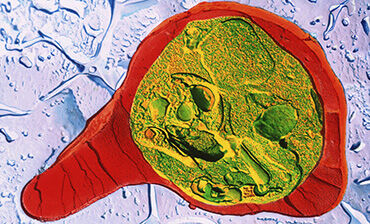Malaria

Malaria is caused by Plasmodium parasites. Four Plasmodium species (Plasmodium falciparum, Plasmodium vivax, Plasmodium ovale and Plasmodium malariae) give disease in humans, and humans are their only relevant reservoir. Once the Plasmodia multiply inside the red blood cells, fever and multi-organ disease may ensue, which can be life-threatening when P. falciparum is involved. Malaria is characterised by fever and influenza-like symptoms, including chills, headache, myalgia, and malaise.



